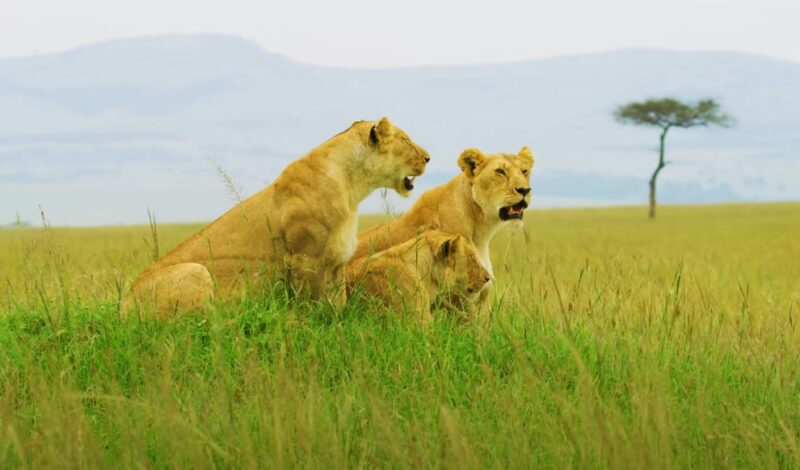Exploring Ethiopia’s national parks offers a unique window into the country’s rich biodiversity and stunning landscapes. From highland escarpments to lowland savannahs, each park presents a distinct experience that captivates nature lovers and adventure seekers alike.
You can expect to encounter a diverse array of wildlife, including rare and endemic species.
With fascinating ecosystems and a blend of cultural heritage, these parks not only protect wildlife but also offer meaningful experiences that highlight the natural beauty of Ethiopia.
10. Alatish National Park
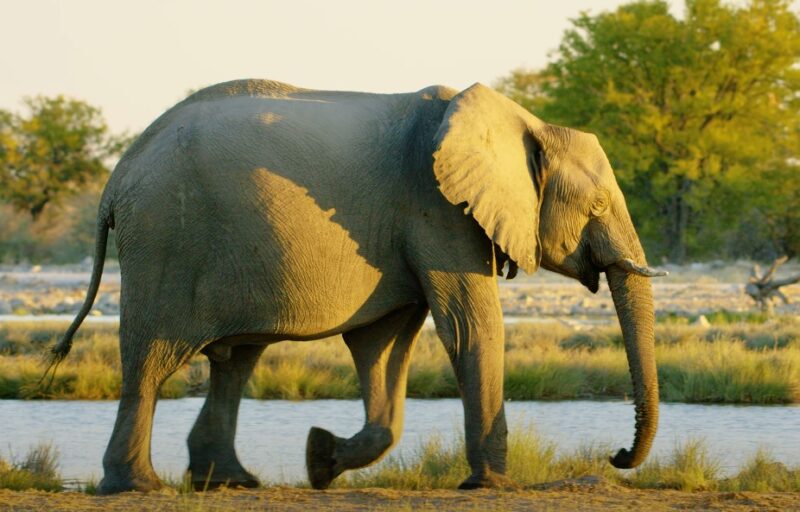
Established in 2006, Alatish National Park is located about 970 kilometers north of Addis Ababa. Situated in the Amhara Region near the border with Sudan, it covers approximately 2,665 square kilometers.
The park is part of Africa’s “Great Green Wall,” which aims to combat desertification. Its landscape includes flat plains, valleys, streams, and seasonal wetlands. Alatish is also home to the Alatish River, which flows into South Sudan.
Wildlife enthusiasts will appreciate the park’s diverse fauna. Elephants, leopards, and various antelope species can be found here. Birdwatchers can spot several bird species, making it a significant location for avian biodiversity.
Alatish National Park shares a border with Sudan’s Dinder National Park, creating a larger conservation area. This cross-border collaboration helps protect the region’s unique ecosystem.
You can enjoy both the natural beauty and the rich biodiversity when visiting Alatish. Its remote location makes it a less crowded, serene spot for nature lovers.
9. Kafta Sheraro National Park
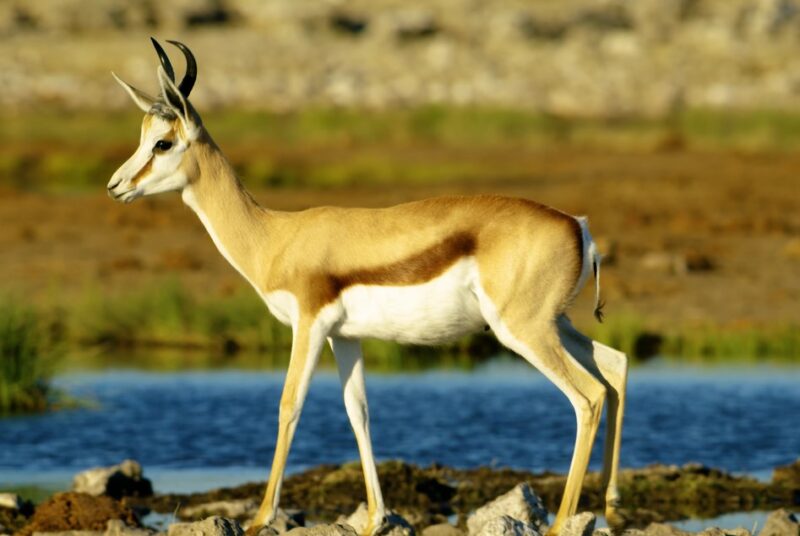
Kafta Sheraro National Park, located in western Tigray, Ethiopia, is a large conservation area.
Covering over 500,000 hectares, it is one of the biggest protected regions in the country.
The park offers a unique experience with its diverse wildlife. Elephants, antelopes, and several bird species can be seen. The presence of large mammals and varied birdlife makes it a key spot for nature enthusiasts.
You will find the park bordered by Eritrea to the north, Shiraro to the east, Wolkite to the south, and Humera to the west. Its strategic location adds to its unique charm.
Established formally in 2007, it had already been a wildlife sanctuary for many years. The area now continues to be an important habitat for many species.
Kafta Sheraro’s landscapes vary from lowlands to woodlands. You can explore different terrains, each offering something new.
This park is unique as it is the only national park in the Tigrai region. Its high biodiversity places it among the more important parks in East Africa.
8. Chebera Churchura National Park
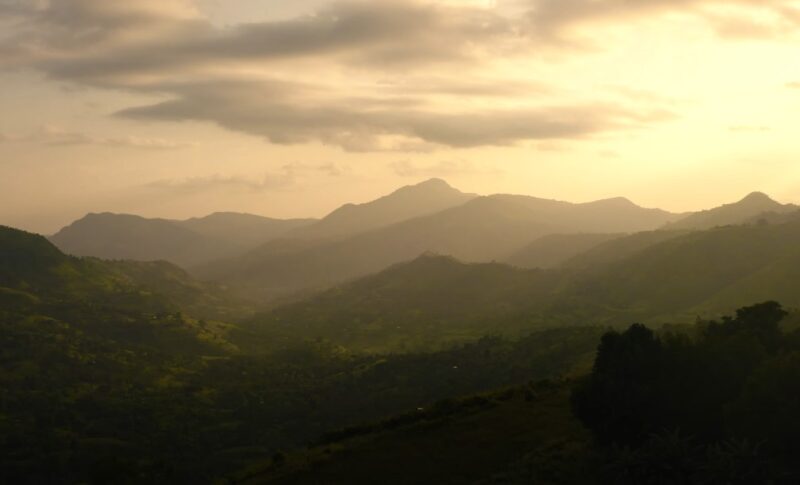
Chebera Churchura National Park is located in the western side of the central Omo Gibe basin, between Dawro zone and Konta Special Woreda. It covers an area of 1,215 square kilometers.
The park’s elevation ranges from 700 to 2,450 meters above sea level. You can expect a variety of landscapes, from grasslands to the striking Churchura mountains.
The best time to visit is during the Dry season, from November to February. During these months, the weather is more favorable for exploring the park on foot.
Visiting in the Wet season, from April to October, can be challenging due to the rain.
The park is home to a variety of wildlife, including African elephants and lions. You will also find hippos and buffaloes. Birdwatchers will enjoy spotting various bird species in the park.
Getting to Chebera Churchura National Park involves a drive. It is about 450 kilometers southwest of Hawassa and 460 kilometers from Addis Ababa. Make sure your vehicle is suitable for long drives.
Chebera Churchura National Park offers a unique and enriching experience for nature lovers and adventure seekers. Enjoy the serene environment and diverse wildlife this park has to offer.
7. Mago National Park
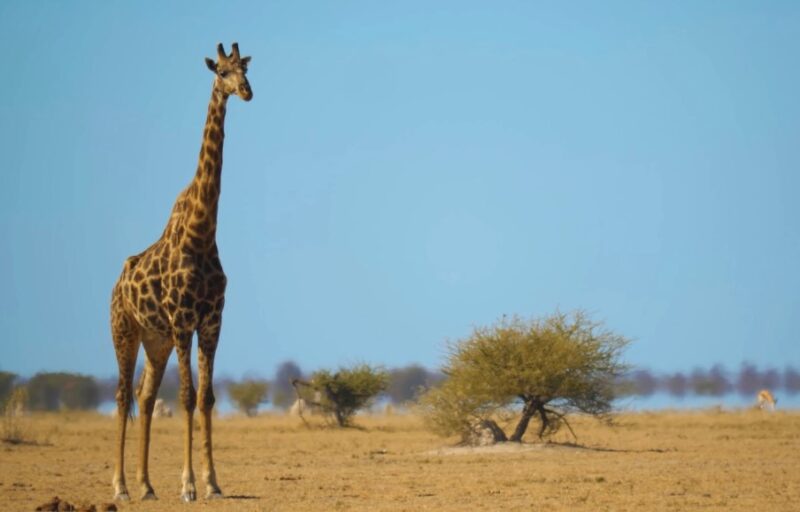
Mago National Park is located in the Southern Nations, Nationalities, and Peoples’ Region of Ethiopia. It covers 2,162 square kilometers. The park is divided by the Mago River, a tributary of the Omo River.
When you visit, you can explore the typical bush savanna area. Over 81 large mammal species live here, including African elephants and giraffes.
Bird watchers will enjoy spotting over 237 bird species. Lake Mago offers opportunities for boat tours and fishing.
The local villages in the area allow you to learn about the unique culture and traditions of the indigenous people. They live in small settlements along the big rivers.
Weather in Mago National Park is similar to the weather in Ethiopia. The best time to visit is during the dry season, which runs from October to March.
The park’s diverse landscapes include woodlands, riverbanks, and mountains. Exploring these areas gives you a chance to see a variety of wildlife and plants.
6. Nechisar National Park
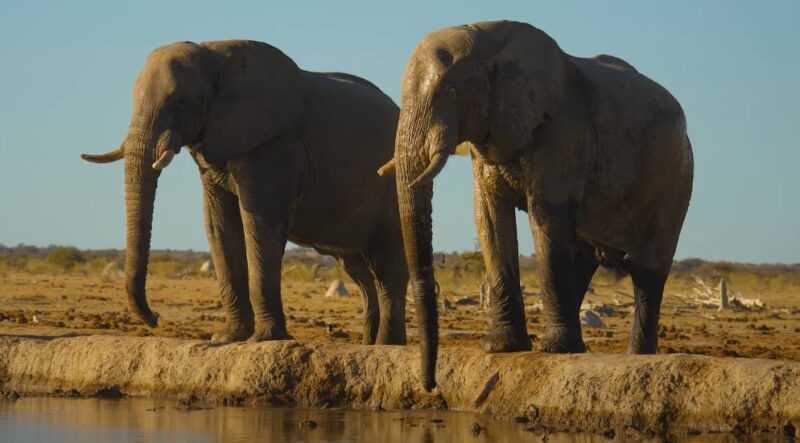
Nechisar National Park is a must-visit destination in Ethiopia. Established in 1974, it covers a vast area near Arba Minch town. The park is about 450 km south of Addis Ababa.
This park is known for its unique landscapes and diverse wildlife. It was created to protect the endangered Swayne’s Hartebeest. The park also includes grass plains, hot springs, and Lake Chamo.
The best time to visit Nechisar National Park is during the Dry season from November to February. During these months, the roads are more accessible for travel. The wettest months—April, May, September, and October—can make the roads impassable.
While exploring Nechisar, you’ll see a variety of animals, including zebras, gazelles, and diverse bird species. The park’s location near Arba Minch also offers beautiful views of the Rift Valley.
5. Awash National Park
Awash National Park is in the northern part of Ethiopia’s Great Rift Valley. The park is about 215 km east of Addis Ababa, near the Afar depression. It spans the border between the Oromia and Afar regions.
The park covers an area of around 827 square kilometers. It sits mostly at an altitude of 900 meters. You will find varied landscapes here, including grasslands, acacia woodlands, and volcanic hot springs.
The weather in Awash National Park is usually hot and dry. There is a short wet season from July to September. During the day, temperatures can reach about 32°C (90°F) and nights cool down to 18°C (64°F).
The park is known for its diverse wildlife. You can see animals like Beisa Oryx, Soemmerring’s Gazelle, Warthogs, and Vervet monkeys. Birdwatchers will enjoy over 400 bird species, making it a birding hotspot.
Awash National Park offers a unique mix of natural beauty and wildlife. Whether you’re game driving or exploring on foot, it’s a memorable experience. Make sure to visit the park’s headquarters at Gottu for more information and guidance during your visit.
4. Gambela National Park
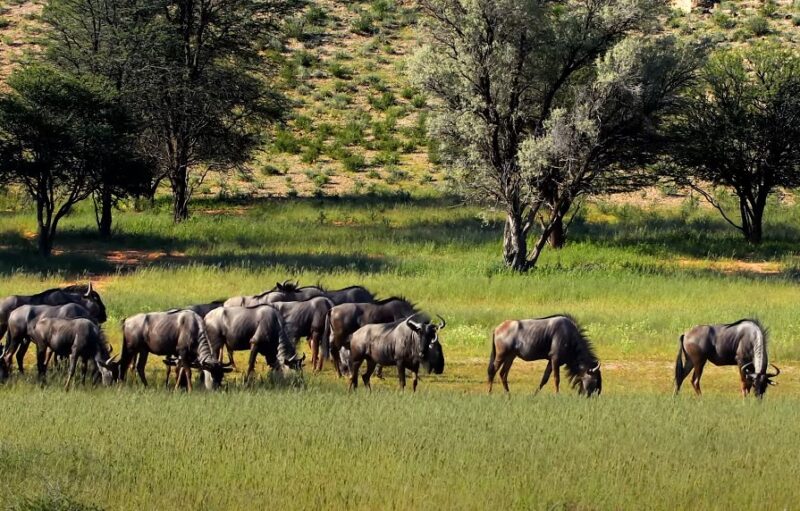
Gambela National Park is on of Ethiopia’s largest and most fascinating parks. Located about 850 kilometers west of Addis Ababa, it spans over 5,000 square kilometers. The park was established in 1974 to protect the unique swamp habitats and their wildlife.
The park features a variety of landscapes. The rivers Baro and Gilo flow through it, creating rich habitats. You can see tall grasses and dense woodlands. These diverse environments support a wide range of animal species.
Wildlife enthusiasts will love Gambela. The park is home to 41 large mammal species. Among them, you’ll find the white-eared kob and the Nile lechwe. Buffaloes, giraffes, and waterbucks also roam these lands.
Gambela is a remote and less-visited park. This makes it ideal for those seeking solitude. The secluded nature of the park adds to its charm. Visiting Gambela gives you a chance to experience an untouched wilderness.
For the best experience, visit between December and May. This period offers ideal weather conditions. Plan your trip carefully, as the park’s facilities are limited. Despite this, a visit to Gambela National Park guarantees an unforgettable adventure in Ethiopia’s wild landscapes.
3. Omo National Park
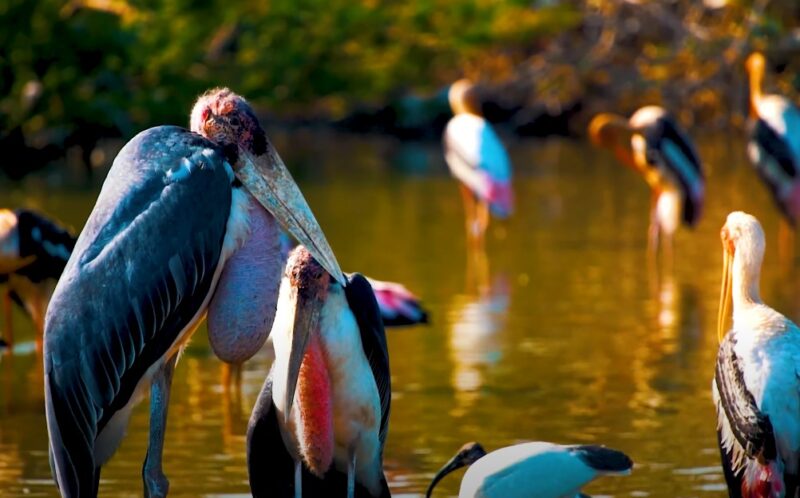
Omo National Park is one of the largest and most diverse national parks in Ethiopia. Located on the west bank of the Omo River, it spans roughly 4,068 square kilometers.
This park is known for its stunning landscapes, featuring rivers, hills, and open grasslands. Wildlife enthusiasts will appreciate the abundant animal life, including elephants, lions, and various bird species.
Cultural heritage is another highlight of Omo National Park. The region is home to several indigenous tribes, each with its own unique traditions and lifestyles. A visit to the colorful village of Kibish offers a glimpse into this rich cultural tapestry.
Omo National Park is also famous for its ancient rock art, some of the oldest in the world. These remarkable artworks provide a window into the region’s prehistoric past.
Traveling through the park can be challenging due to its remote location, but the experience is rewarding. An airstrip near the park now makes access slightly easier.
For those looking to explore raw natural beauty and rich cultural history, Omo National Park is an unmissable destination in Ethiopia.
2. Bale Mountains National Park
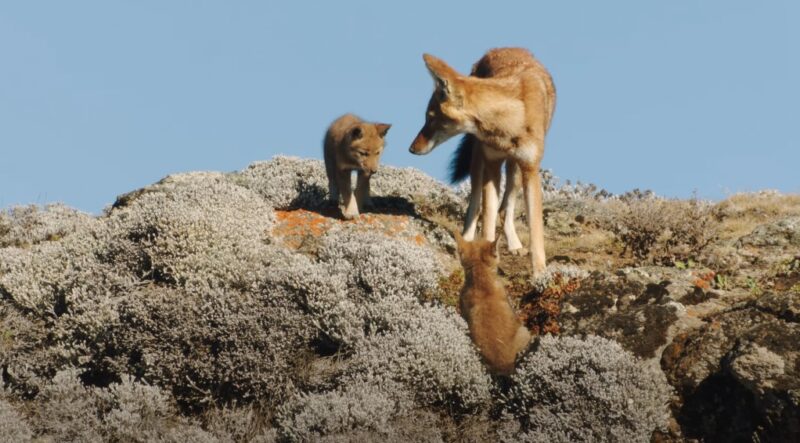
Bale Mountains National Park is located about 400 km southeast of Addis Ababa.
The park is known for its diverse landscapes, including the high-altitude Sanetti Plateau, which rises over 4,000 meters. This plateau is dotted with glacial lakes and swamps, creating a unique and breathtaking environment.
One of the park’s most impressive inhabitants is the Ethiopian Wolf. This rare canid is the world’s rarest and is found only in Ethiopia.
With fewer than 400 individuals remaining in the wild, spotting one is a rare and special experience.
The park is also home to the Bale Monkey, which lives in the bamboo forests of the Bale Mountains and Sidamo Highlands. These monkeys are endemic to Ethiopia, adding to the park’s unique wildlife.
Trekking is one of the best ways to explore Bale Mountains National Park. The combination of wildlife and varied landscapes makes every hike an adventure. Whether you are an experienced trekker or a beginner, there are trails to suit all levels.
If you prefer a more relaxed stay, there are excellent lodges and accommodations in and around the park.
1. Simien Mountains National Park
Simien Mountains National Park is a true gem in northern Ethiopia. It spans 220 square kilometers of stunning landscapes, including peaks, plateaus, and valleys.
Located just north of Gondar, this park is easily accessible and is part of the Ethiopian Highlands.
When you visit, you’ll find dramatic plateaus, sheer cliffs, and towering peaks. The park offers some of the best trekking routes in Africa. Hikers of all levels can enjoy the breathtaking scenery as they explore the rugged terrain.
Wildlife enthusiasts will be thrilled by the park’s biodiversity. You can spot animals like the gelada monkeys, Ethiopian wolves, and the Walia ibex. The park is also a haven for birdwatchers with many unique species.
For accommodations, you have options like Simien Lodge and Limalimo Lodge. These lodges provide comfortable stays with scenic views.
Visiting the Simien Mountains is a must for anyone exploring Ethiopia. The combination of natural beauty, wildlife, and outdoor adventure makes it a top destination.
The Bottom Line
Ethiopia offers some of the most unique and awe-inspiring national parks, and more than that. Each park features its own distinct beauty and wildlife.
Plan your visits around the parks’ unique offerings to make the most of your trip. Whether you want to hike, bird watch, or simply relax, these parks will not disappoint.

